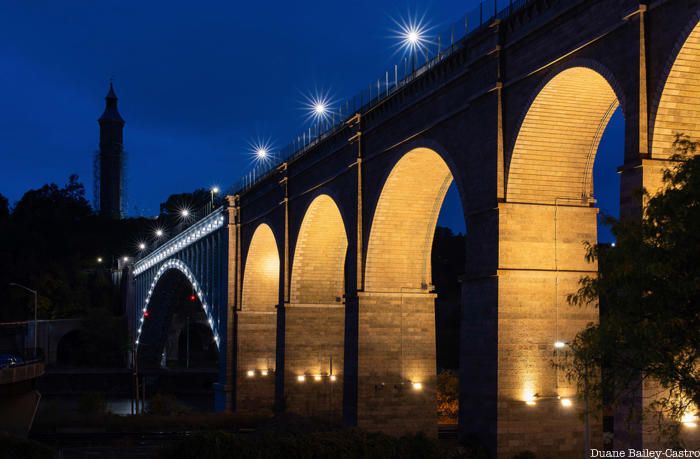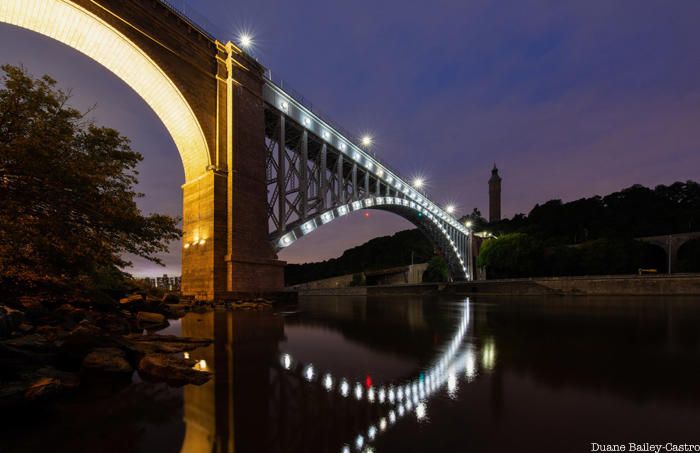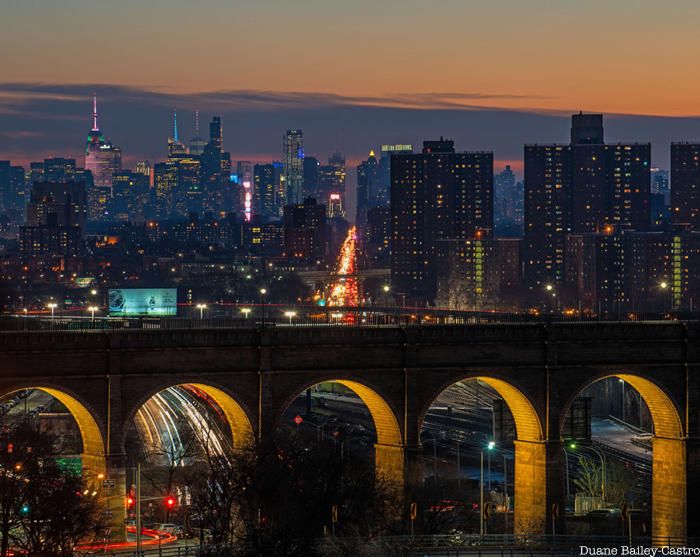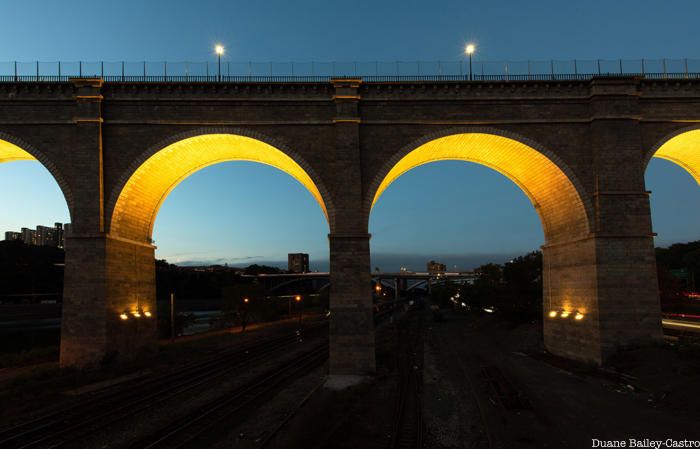Last-Minute NYC Holiday Gift Guide 🎁
We’ve created a holiday gift guide with presents for the intrepid New Yorker that should arrive just in time—


After months of lockdown caused by the COVID-19 pandemic, New Yorkers are eager to discover interesting outdoor spaces to explore and enjoy this summer. The High Bridge, the city’s oldest surviving bridge, is one worthwhile destination for New Yorkers hoping to take in captivating views and learn a bit of history close to home.
June marked the five-year anniversary of one of the most significant milestones in the city’s ongoing efforts to invest in and expand the city’s park’s system: the restoration and reopening of the High Bridge. After 40 years of disrepair and negligence, the High Bridge (aka Aqueduct Bridge) which was built in 1848 to transport fresh water to Manhattan from Westchester’s Croton River, was reopened to New Yorkers on June 9, 2015 after a five-year restoration project that cost about $61 million. The celebrated reopening of the historic span renewed interest not only in the engineering ingenuity and legacy of the bridge but it also helped to reenergize the public’s commitment to investing in the future of the nearby Harlem River waterfront and the surrounding parks.

All photographs by Duane Bailey-Castro
The High Bridge’s historic and celebrated reopening received more fanfare that summer when the High Bridge Festival, organized with the support of about a dozen community groups, took place on July 25, 2015. Activities for the public included a public art installation, live entertainment, and walking tours.

Five years later, the High Bridge’s restoration remains the best-known example of the New York City Department of Parks & Recreation’s work in cooperation with activists and locals to improve, revitalize, and expand accessibility to the recreational opportunities found in the Harlem River Valley for the people of the Bronx and Upper Manhattan. The 2019 reopening of the renovated Roberto Clemente State Park, located north of the High Bridge in the Bronx, is also worthy of acknowledgement for its construction of new playgrounds and recreational spaces and improvement to public access to the Harlem River waterfront. This state park is managed by the New York State Office of Parks, Recreation and Historic Preservation.

The 172-year old High Bridge can be accessed from either of the two parks – both named Highbridge – that the span connects to in Manhattan and the Bronx. Manhattan’s Highbridge Park – by far the larger of the two – is perhaps best known for its 170-foot tall water tower that – like a rocket – dominates the surrounding Washington Heights neighborhood and skyline. It is easily recognizable from the nearby Major Deegan Expressway. Built in 1872 to provide water pressure to Manhattan’s higher elevations, the High Bridge Water Tower is currently getting a makeover.

Since last fall, the Parks Department has been in the midst of a restoration project that includes major upgrades to the towering structure. Although it remains closed due to the construction which is not scheduled to be completed until April 2021, visitors can learn about its history and that of the arched span by way of nine large bronze medallions imbedded with historical information that run the length of the High Bridge’s walkway.


Five years after locals, activists, history enthusiasts, and others first walked across the High Bridge in pride, awe, and celebration, it remains an important conduit for residents of Washington Heights and the Highbridge communities and a destination for them and other visitors to relax and take in the commanding views of the Harlem River Valley. From atop the High Bridge, pedestrians can admire the interconnecting web of cars buzzing on the Major Deegan Expressway and the other nearby arteries as well as look south and marvel at Manhattan’s iconic skyline in the distance. For those like myself who plan to stay in the city for what promises to be a most unusual summer due to the pandemic, the High Bridge and the nearby parks offer fascinating views, the opportunity to learn about New York City history, and the chance to reflect on the many benefits that have come from past and recent investment in our public infrastructure and recreational spaces.

The High Bridge is open daily from 7am to 8pm. It is accessible from the Bronx side at West 170th Street and University Avenue and from the Manhattan side, enter Highbridge Park at West 172th Street and Amsterdam Avenue and then, walk to the High Bridge Water Tower Terrace staircase down to the bridge entrance below.
Duane Bailey-Castro is a photographer and educator, whose continuing project is the documentation of New York City’s Harlem River Bridges. Learn more about him and his work at https://www.duanebaileycastro.com and follow him on Instagram at @duanebaileycastro
Subscribe to our newsletter